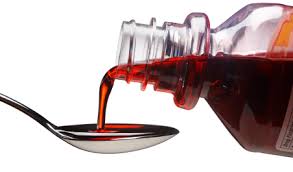Liquid Medication – Some dogs, no matter how hard you try, just refuse to take their medication in tablet form. If this is the case, you may be able to crush up the pill, mix it with sugar water and syringe it sideways into the mouth. Melted icecream and sugar water to help raise blood sugar levels in a dog with hypoglycaemia, and also cough syrups can be given in this way too but you should always check with your vet before using any medication which has not been specifically prescribed for your animal.
NB Not all tablets can be crushed and administered as above. Some tablets have a specific “enteric” coating on them which is designed to keep the tablet in tact until it reaches the stomach. Often these types of medication may irritate the digestive tract if they start to disperse too early and so crushing these pills would be inadvisible. If you are unsure as to whether the medication you have been given is enteric coated, please check with your vet.
1) Ensure you have a syringe with the right measurements printed on it so that the dose you administer is correct for your dog. It is VERY easy to mistake 0.1 for 1 and vice versa and when giving medication, that decimal point is incredibly important so please check that you are giving the right amount and not 10 times as much in error.

2) Gently pop the syringe in the side of the mouth into the pocket of the cheek and squirt the fluid in slowly, in a controlled manner. You may need to do this in several stages so as not to put too much in all in one go.
3) DO NOT squirt the fluid quickly
4) DO NOT aim to the back of the throat as this may choke the dog
5) if the dog is lying down, always pop the syringe of liguid in the cheek nearest the ground, so the liquid does not go across the airway as explained below.
N.B. It is important that the medication does not go down the airway rather than the throat as this can be incredibly dangerous. If the fluid goes into the lungs it can cause what is known as aspiration pneumonia or secondary drowning where the lining of the lungs react and swell and in severe cases can even “drown” the dog.

